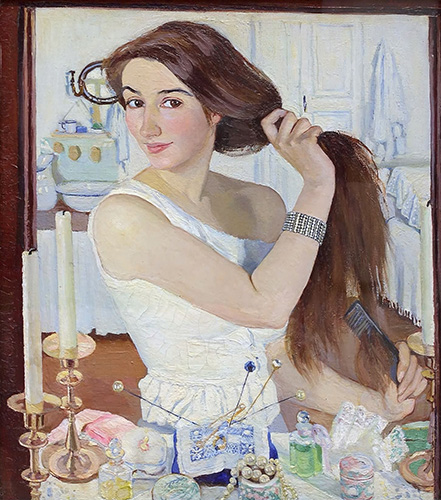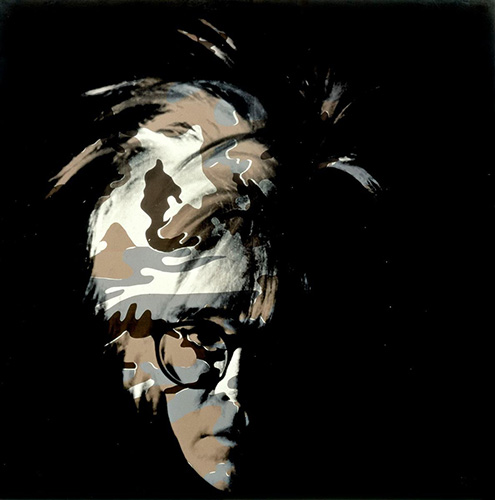
How to observe paintings – the role of the Artists self- portraiture
ArtWizard 20.07.2020
“I paint self-portraits because I am so often alone, because I am the person, I know best.”
Frida Kahlo

Frida Kahlo, Self-Portrait with monkey, 1945
Leon Battista Alberti, master of the Italian Renaissance, claimed that Narcissus, having seen his own beautiful face reflected on the surface of the water, was the real inventor of paintings. As he was discussing the artists' work in the context of the Greek god, we can accept his hyperbole and understand that his trying to suggest that artist’s activity os close to the one of God.
The function of the self-portrait is one a self-scrutiny, but also of self-advertisement. A demonstration of the kind of art an individual can produce. The artist must stare long and hard so, looking at the work, as we are often confronted by an overwhelming stare.

Zinaida Serebriakova, Self-portrait at the Dressing Table, 1990
The intimate view of the artist in her underwear, combing her hair and gazing directly at the spectator, showing her bedroom and her busy dressing table in the background. As she is staring directly with her right eyebrow slightly arched, she poses and question but is also making a statement as if she is saying: “Here I am in my intimate moment, being a model but also an artist”.

Artemisia Gentileschi, Self Portrait, 1638-39
The artist portrays herself as the allegory of Painting, dressed in her best clothes and with a symbolic medallion mask around her neck. This could be in a sense called a double self-portrait, as she documents her face while also posing as the personification of the painting. Gentileschi's depiction of herself as the Allegory of Painting has made her seem somewhat egotistical to some critics. Representing oneself as the epitome of an idea is certainly a huge claim, and it may seem that Gentileschi is proclaiming herself as one of the most magnificent artists, though she was still relatively unknown at the time.
Oscar Wilde suggested that every portrait painted with feeling is of the artist always and not of the sitter. The artist reveals himself through the colored canvas, and the self-portrait is therefore a concentration of what the artist wishes to say about their art, a physical rendering that aims to include a psychoanalytical evaluation. It may offer an insight into the essence of their creative unconscious, their ambitions, and their desires. Yet, the act of painting a self-portrait is also implicitly about death, anticipating a life beyond the grave and commenting on the vanity and brevity of human existence. One can say that by painting a self-portrait, the artist both captures life and arrests at the same time.

Rembrandt van Rijn, Portrait of the Artist, 1665
The light of the cap of Rembrandt draws attention to his face and to his extraordinary expression, at the same time complicit, vulnerable and compassionate. The parallel blacks of his coat echo the circles behind, as examples of the perfect form. Equally balanced, his mall stick and the paintbrushes form a triangle with the square of the palette.

Andy Warhol, Camouflage Self-portrait, 1986
In this portrait, Warhol uses the so-called “chiaroscuro”, this meaning that one side of his face is in darkness while his black-framed glasses are focusing the attention pf the viewer to his one staring eye. Warhol is a master of graphic communication making a sharp contrast of the photographic image with the abstract camouflage decoration he chose for this artwork. One of the most striking self-portraits he made.
As portraiture, along with the self-portraits, has always been a way of making money and supporting an artist, it plays a central role in the art and painting history and to the way the viewers perceive a particular artist or style. We will discuss more portraiture in the next article on ArtWizard.
